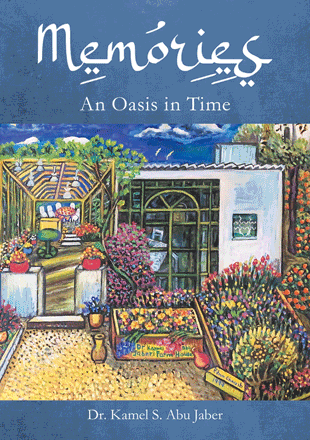You are here
Change despite the shadow of history
By Sally Bland - Dec 19,2021 - Last updated at Dec 19,2021
The Jordanians and the People of the Jordan
Kamel S. Abu Jaber
UK: Hesperus Press Limited, 2021, 159 pp.
Although the late Dr Kamel S. Abu Jaber first embarked on an academic career, prior to his well-known political career in Jordan, this book is not an academic undertaking. It is, however, obviously the work of a scholar, filled with knowledge that goes deeper than facts and figures. As his widow, Loretta Abu Jaber, writes in the introduction: “He wrote it to explain to foreigners the thoughts, feelings and aspirations of the Jordanians, Palestinians, and Arabs who are often misunderstood, hoping to provide them with insight into who we really are.” (p. 11)
Dr Abu Jaber had the gift of both loving his country and being able to appraise it with a critical (but not harsh) eye. He self-identifies as a nationalist humanist, and his book shows that it is possible to be objective without eliminating human feelings and values. In fact, this is what makes his book relevant forty years after it was first published in 1980. After all, many of the core issues have remained the same despite modernisation and change, notably the antagonistic Israeli policy towards the Palestinians. Loretta Abu Jaber chose to republish this bookto commemorate her husband a year after his death and coinciding with the Kingdom’s centennial year. Adding to the book’s continued relevance, the appendix, which originally consisted of statistics from 1952 and 1979, has been updated with 2020 figures to show Jordan’s progress in terms of vital social indicators in the fields of education, health, agriculture, economy and so forth.
In the opening chapter, Dr Abu Jaber combinedpoetics with geographic, religious and historical references to describe the significance of the Jordan River and its environment, and how the land has influenced the character of the people. But the river is also the point at which conflict enters the scene due to the Israeli occupation which has turned it into a boundary. However, it didn’t start there. In Dr Abu Jaber’s view, Jordan is overburdened by history: “Too much history in this land, a land haunted by the echoes of history… pre-Biblical, Biblical, Hellenistic, Roman, Islamic and now modern times… Too much enmity, love, blood, tears and sweat where the shape and course of humanity was influenced. The shadow of history is always here, elongated beyond belief, giving further dimensions to the land and its people.” (p. 20)
Still, the challenge posed by Israel was seen as the most damaging by Dr. Abu Jaber: “We are paying the price by being forced to devote so much time and energy to the struggle, time and energy which we should be devoting to the development of a better life for our people.” (p. 37)
Yet, he was ever-hopeful, writing, “This, too, shall pass, and this land, the Jordan Valley kissing both banks and touching the hills of Palestine and Jordan, the cradle of civilization now so utterly degraded it cannot defend itself, the land of the prophets and heroes, shall once more produce a savior.” (p. 23)
The approach adopted by Dr Abu Jaber is inclusive and closely aligned with reality. That’s what makes the wording of the title important. The term, people of the Jordan,obviously refersto Jordanians, but also to Palestinians of whom he writes, “It really does not matter whether or not they are a minority in Jordan. This has nothing to do with their rights in Palestine, nor with the fact that they are very welcome in Jordan, and are indeed in their home.” (pp. 29-30)
For the author, the people of the Jordan encompass bedouin, villagers, farmers, urbanites, workers, professionals, etc. It also includes Circassians, Chechens, Armenians, Assyrians, Kurds, Turkman and Gypsies. What they all share, according to Dr Abu Jaber, is being in a state of transition between old and new ways of life.
Dr Abu Jaber evaluates many aspects of life in Jordan: The role of government, the priority assigned to education, women’s role in public life (where he was perhaps a bit too optimistic), the gradual loosening of kinship bonds, the personalised social atmosphere, the development of culture and the arts and more. To put his evaluations in perspective, one must remember that he was writing at a time when King Hussein was still alive and reigning, a time when the Internet had not yet invaded every corner of life, a time when radio and television still held sway.
The last chapter in the book is devoted to politics and mainly pays tribute to the wisdom of Hashemite rule, especially that of King Hussein. If Jordan’s centennial is an occasion to pause and contemplate how far Jordan has come, then this is a book that deserves to be read and/or reread. “The Jordanians and the People of the Jordan” is available at the Jordan Book Centre and other bookstores.
Related Articles
Memories: An Oasis in TimeKamel S. Abu JaberUK: Hesperus Press Limited, 2023Pp.
AMMAN — Researcher Ibrahim Salem has turned a 40-year hobby of collecting banknotes into a wide-ranging book documenting the history of Arab
AMMAN — The Ekleel Centre for Studies and Consultancy on Saturday honoured Jordanian actor Zuhair Nubani for receiving an honourary PhD degr


















